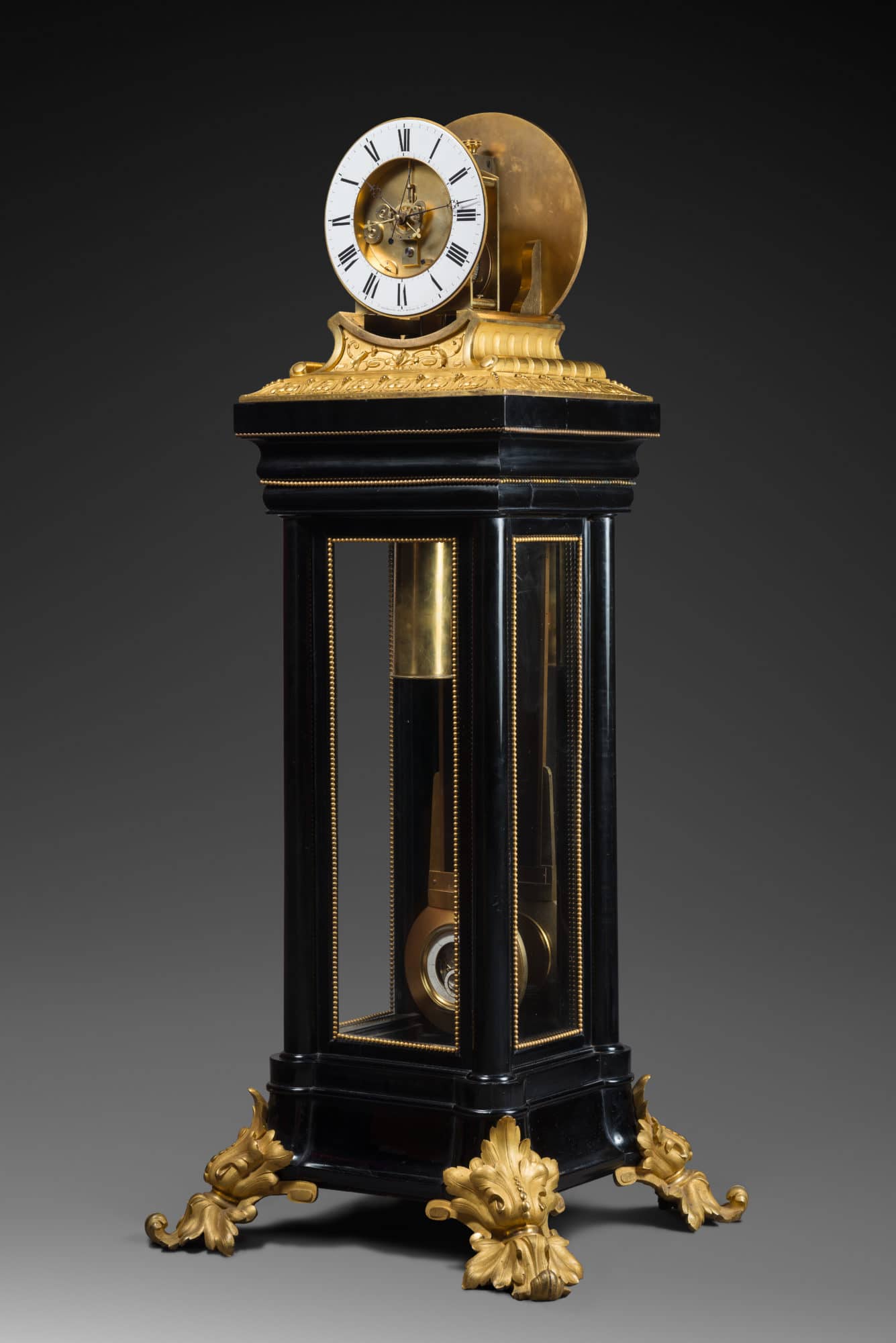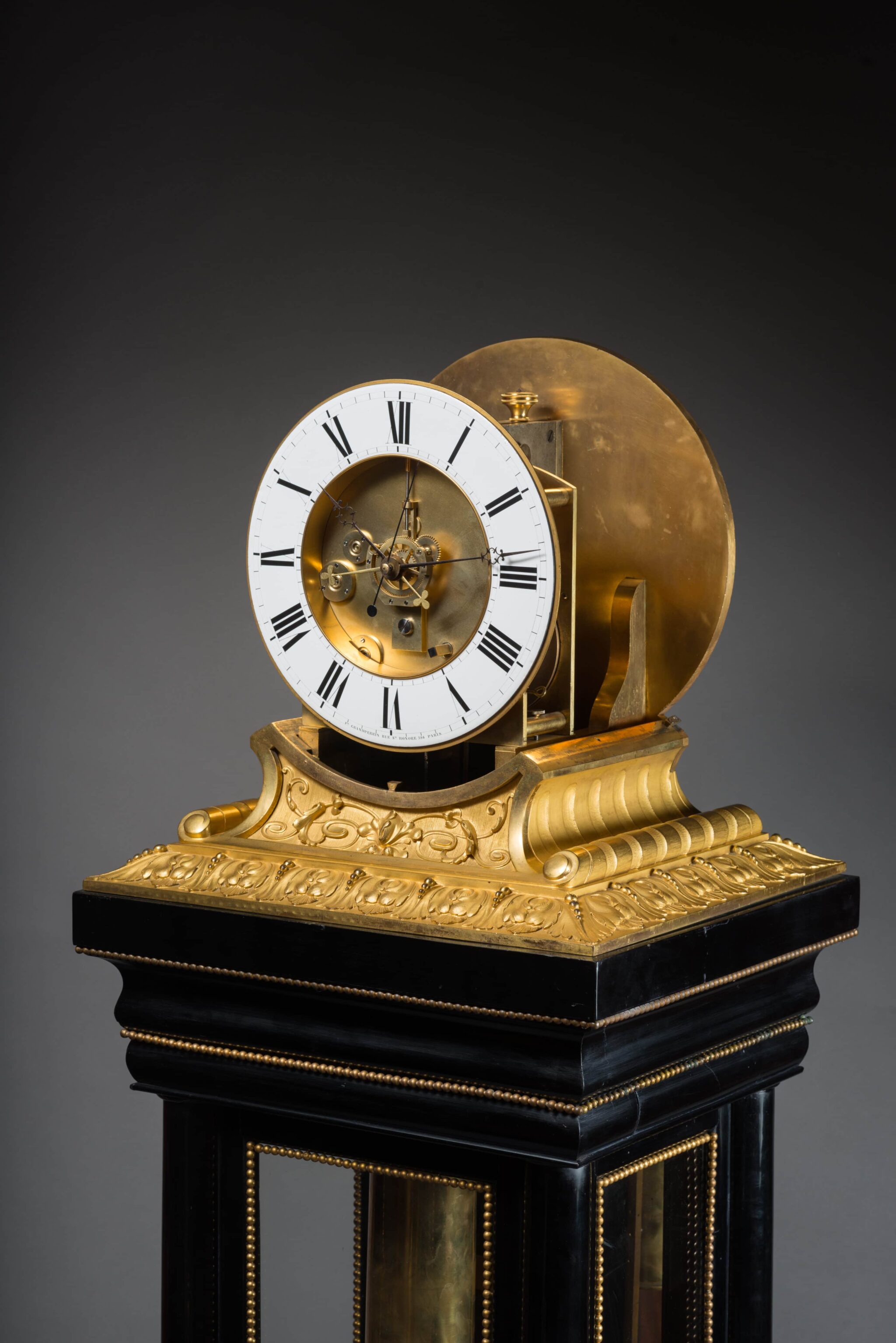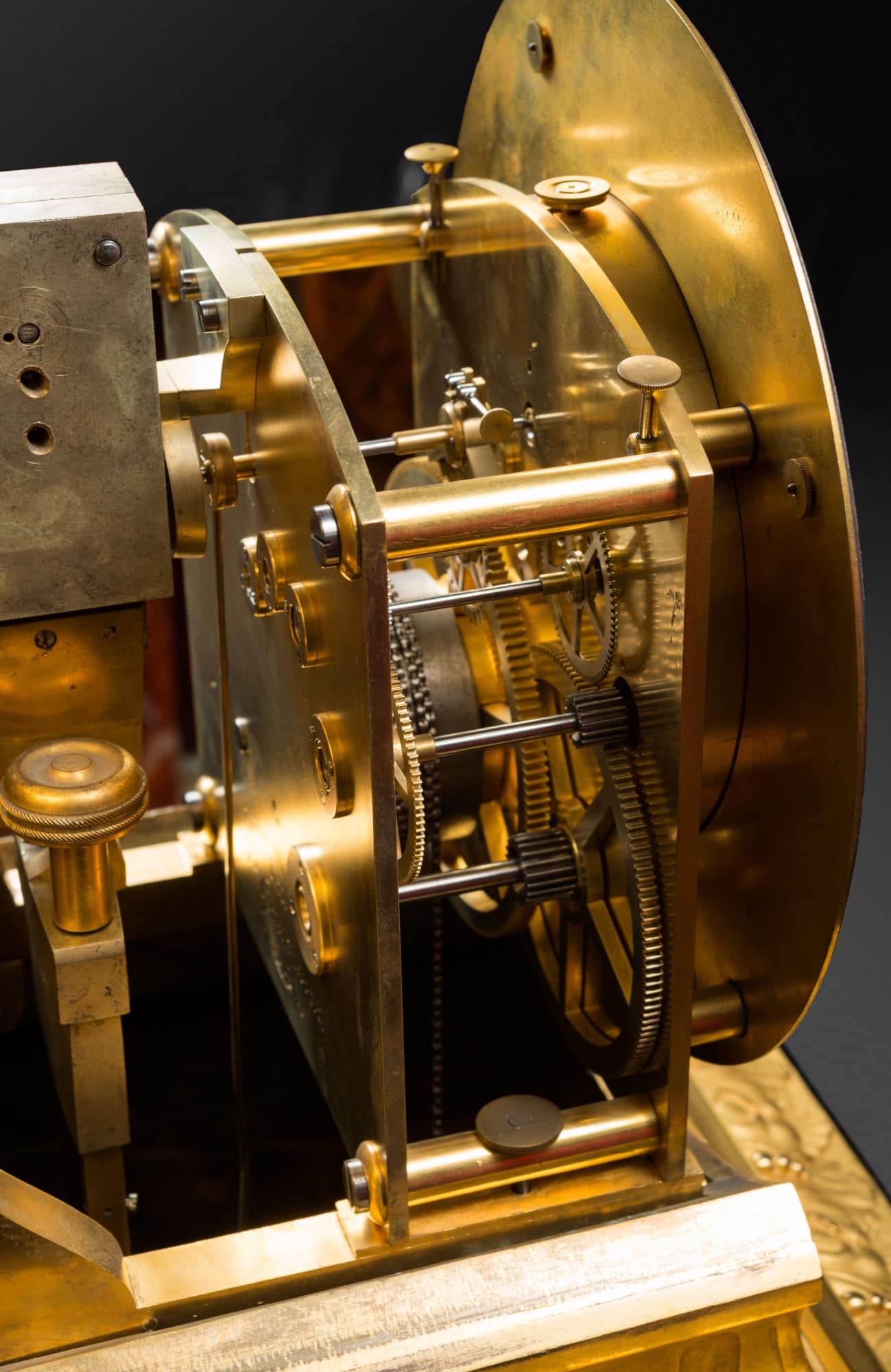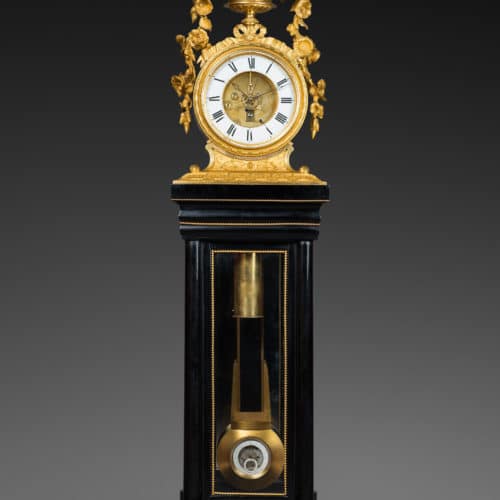Exceptional and Unique Regulator with Mica-Plaque Pendulum
Provenance:
Shown at the 1855 Paris Universal Exhibition.
The enamel dial, signed “Fn Grandperrin rue St Honoré 394 Paris”, has Roman numeral hours and a minutes graduation, with a blued steel central seconds hand. The finely chased and gilt bronze case is adorned with leaf friezes, scrolling foliage, and lateral scrolling with wide fluting; it is surmounted by a flower basket decorated with fluting and interlace motifs; the dial is framed by trailing flower garlands. The moulded ebony or blackened wood base is highlighted by gilt bronze beading and glazed panels revealing the pendulum, which features two enamel ring dials, the first of which bearing the thermometer indications and the second indicating the degree of expansion of the metals; it contains a mica plaque (mica is one of the components of granite). The regulator rests on four robust gilt bronze feet made up of scrolled acanthus leaves. The movement is of one-year duration.
This spectacular regulator may be considered the masterpiece of clockmaker Grandperrin. In addition to the perfection of its mechanism, the sober and elegant design of its case and the exceptional quality of its chased and gilt bronze mounts, this regulator is interesting in that its pendulum is fitted with a mica plaque. This ingenious device was patented by Grandperrin on October 31, 1854, one year before the regulator was displayed at the Universal Exhibition (see the Catalogue des brevets d’invention pris du 1er janvier au 31 décembre 1854 dressé par ordre du Ministre de l’Agriculture, du Commerce et des Travaux Publics, Paris, 1855, p. 248: “The use of a substance in the fabrication of horological pendulums and suspensions”). At the Universal Exhibition, the innovation drew attention due to its lightness and because it increased the gridiron pendulum’s temperature compensation due to its resistance to expansion and contraction, thus allowing the pendulum to “bring the point of oscillation considerably closer to the centre of gravity” (see H. Boudin, Le Palais de l’Industrie universelle, ouvrage descriptif ou analytique des produits les plus remarquables de l’Exposition de 1855, Paris, p. 125). To the best of our knowledge the present regulator is the only piece featuring this technical innovation.
The son of Parisian horologist Nicolas-François Grandperrin and Anne-Antoinette-Victoire Lherminier, Ferdinand-Joseph Grandperrin took over his father’s business in the late 1830’s or early 1890’s, rapidly acquiring clients. Established at 394, rue Saint-Honoré, he became quite well known. In September 1842 he married Eléonore-Pauline Meugnot, probably the daughter of clockmaker Joseph-Julie-Alexandrine Meugnot, recorded in 1830 at the place de l’Oratoire. Grandperrin became famous for his innovative work, as well as for the perfection of his movements.














